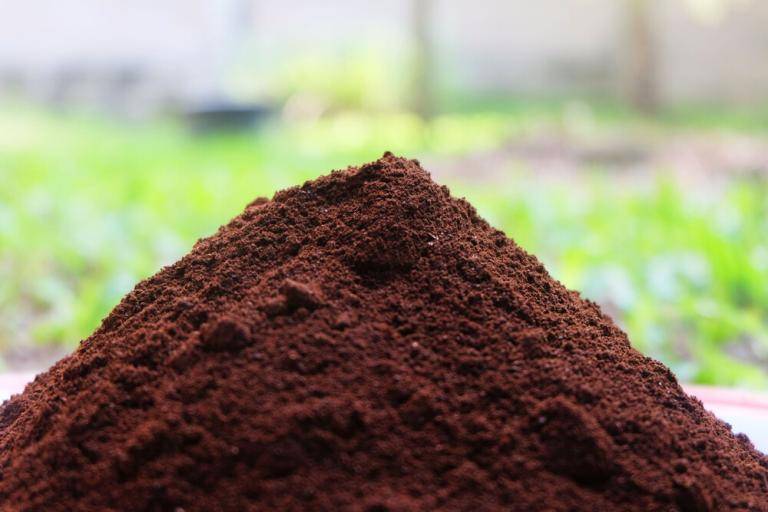The Importance of a Good Genetic Pool
Whether newbies or experienced, cannabis growers ask questions. In fact, each week, we receive questions and concerns over the performance of various marijuana seeds, whether bought from our seedbank or elsewhere. Maybe you, too, have some pressing questions.
Of all the concerns, a few seem to be cropping up every week. Try as we may answer; still, growers keep coming back with more questions such as why are my crops late to flower? Were they not supposed to start flowering last winter? Why are they weak? Why am I getting a lower yield than I was told?
Indeed, they may not know the answers to their questions, but at times, growers make apparent mistakes. Lack of proper lighting, insufficient nutrients and bad weather are some of the factors that affect germination, growing, timely flowering and the yield. But is that all? Not at all!
The origin of the seeds a grower is talking about is equally important. You may try to introduce proper lighting schedules to your plants, provide sufficient nutrients, but without a proper understanding of the origin of the seeds, your zeal will be futile.
For you to enjoy good results, in the end, you need to understand the kind of climate or weather the marijuana seeds you want to grow to dwell in. That will prevent you from injecting a lot of money into a summer plant in a winter environment.
Obvious Misconceptions
We have come across many marijuana growers who argue, “You can grow any marijuana strain anywhere and any time of the year. As long as you give the plants your all in terms of fertilizer, additional nutrients, and the needed light, you can get good results.”
Well, we don’t want to say that the argument is wrong. Instead, it is misplaced. It is not a joke. Growing cannabis from day 1 to maturity and attaining the expected results is not a simple task. After all, you are not the only party in the proper growth of your plants. Several things come into play.
For your information, hundreds, even thousands of growers lose millions of dollars each year, not to their lack of effort in the plants but unavoidable causes, even inevitable. For instance, how much role do you play in controlling the cross-pollination of plants? Okay, let’s hope you have a stake. What of the sudden change of weather or invasion of pests?
You may think that we at AMS do not wish you well. Far from that. In fact, we wish you well in your cannabis growing business. For that reason, we want to inform you on the importance of understanding the strain’s genetics if you want your plants to grow to proper maturity with great expectations finally.
Before we talk about why it is vital to consider the strain’s genetics before you grow even purchase marijuana seeds, let’s talk about something quickly.
The Unseen Problem
Although there could be several reasons why your plants don’t give you good yields, some growers end up seeing strangely weak plants on their farms because they bought seeds from unauthorized dealers.
Look! This is not a sheer marketing strategy. Alternatively, others get seedlings from friends or family members who plant them either for fun or just for the sake of it. The people may not be interested in high yields. As long as they have few leaves at the end of the day, they are good to go.
Alternatively, other growers get seeds from self-proclaimed cannabinerds. Because they have smoked or used cannabis for a long time, they either consider themselves or are seen as ‘ganja pioneers’ who know everything about marijuana, including the supposed yield.
If you depend on such people who have no idea what is needed to get good yields from a particular strain, you are set to fail. Worst of all is if the seeds come from inbred farms, which many creepy growers attain by cloning.
Do you know what that means? Well, if the latter is the thing, then it means you want to get exceptional results from a seed whose parents are sisters, a sister, and a brother or even identical siblings. Think of that! How the hell will you get good results from plants that have the same genetics?
One-line inbreeding, or what we call genetics self-pollination, often leads to weaker plants that are susceptible to diseases and extremely low or poor yield. It doesn’t have to be like that to you.
The Solution
For you to get the best results, you need to understand marijuana strains’ genetics. The information on the formation of the strain should be at your fingertips. Lack of mixing or cross-breeding strains often leads to very poor results.
In fact, if inbreeding continues for some time, the chances of getting the best results are almost impossible because in the end, there will be scarcity of what to breed a certain strain with.
To attain reputable and endless generation and regeneration of cannabis strains and plant types for that matter, cross-breeding is a nice practice. This evolutionary process ensures no plant is lost. Besides, new plant traits with quality features are brought to life. The result is an endless plant cycle that will only be terminated with the end of humanity, who after all, takes dominion over plants and animals.
Cross-breeding has been the practice for many years. Starting from Afghanistan, where history points to when it comes to the history of marijuana, families planted different strains of marijuana. Later, these families could clone the strains with those from other families. You can imagine the interesting cycle that went on for many years before people started to grow cannabis in large fields.
Wind from the Indian Ocean and the Mediterranean Sea could also play an important role in cross-pollination. After some time, Afghanistan came to the home of many modern strain that have rather strong potencies.
Today, different countries have robust laws that govern the growing and selling of marijuana. Here in the Netherlands for instance, things are not different from what used to happened in Afghanistan centuries ago.
Dutch marijuana breeders still practice cross-breeding with the aim of finding new strains that offer users the best and elevated experience. As much as they do, these breeders ensure they maintain several lines even when they want to cross-breed a strain.
To retain the original strain, these breeders often cross-breed strains after every some time (often a few years). This gap helps maintain what experts call genetic exchange.
The Subtle Process Of Producing Better Marijuana Seeds
To produce the best marijuana strains, professional breeders across the globe engage in a subtle process that no one understands better except those involved. Thankfully, we have our in-house experts thus we have first-hand information and we are going to break it down for you.
Do not worry, it is not a hard nut to crack. After all, it is a practice our experts say, ‘they enjoy’ when doing it. Thanks to the results, we are sure you, too, will love the details of the process.
Before we mention anything about the professional marijuana breeding process, it is essential to point out the reason why as a grower, who is interpreted in breeding to buy new seeds from our seed bank.
You see, by buying new marijuana seeds, which have been properly cross-bred, you are going to get the best and perhaps fastest growing strain with exceptional yields. Tell me that is not what you want! In fact, faster-growing strain with good yields is what growers continuously look for.
Here at AMSB, we have a strong reputation for breeding and cross-breeding some of the best cannabis strains in the world. As a result, we guarantee you the best yields when you buy seeds from our seedbank.
To provide an illustration of what we mean, here is a sample of some of the marijuana strains we breed. The seeds in the illustration below are available for purchase right here at our seedbank:
| Strain Name | Description | Sativa/Indica | High | Flowering Time/Period | Expected Yield (Indoors/Outdoors |
| White Widow | One of the prevalent marijuana strains today.
You can identify them with white THC glands, which is often seen on their wide leaves. Although soft when smoking, the strain produces a ‘high’ like no other. Because of that and other reasons, White Widow was announced the winner of the 1995 Cannabis Cup. It’s true that the plant is short and characterized by few leaves. But it’s perhaps the strongest among cannabis species. |
40%/60% | The strain produces very strong, sharp high that lasts long.
Because of its strength and instant high, it is a good option for those that want to have a feel of what marijuana tastes like. They will NEVER forget because it will give them a proper treat. |
Flowering starts at around the 8th week. | 240 grams /400 grams for every square meter. |
| Ganja Dwarf (Lowrider/Lowryder) Auto | This is a special type of autoflowering marijuana strain.
The strain can autoflowering even if you do not change the lighting pattern. Incredible! Isn’t it? That means whether it is dark or light, night or day, Ganja Dwarf will still continue to flourish. In just below eight weeks, this strain will finish flowering, enabling it to start producing heavy and health buds. As you may have seen, it is called ‘Dwarf’, which means the strain is rather short. True to its name, Ganja Dwarf grows to hit utmost 50 centimeters. If you are a first timer, this is the right strain for you. It is fast, will not give you problems with wind and is highly resistant to pests. |
30%/70% | Features the natural high with indica buzz. | Starts at the 8th week and if late, finishes at the 9th week. | 150 grams for each square meter. |
| Caramelicious Marijuana Strain | As the name sounds, Caramelicious is a beautiful marijuana strain.
It is extremely easy to grow thus ideal for beginners. As she grows, Caramelicious shows off her beauty by developing numerous crystals. |
40%/60% | The plant’s sweet buds producer the best scent, which gives you a moderate yet fulfilling high.
The sensation this plant will give is truly remarkable and synonymous with her beauty and charm. |
Starts at the 8th week and ends at the 9th week if late or delayed for some reason. | 425 grams for every square meter. |
The chart below is not complete, but a sneak view of some of the notable strains you can find in our seed bank. What is more, the chart shows the characteristics of each strain, something that is not common with other seed banks. In fact, there is even more to the description, which helps you understand different strains once you visit the seed bank.
For now, it is good to know that you can access tons of high-yielding strains that are bred by our experts.
Final Thoughts
Yes, there is a lot to growing marijuana than balancing nutrients, ensuring there is no wind and that the plants get proper regulation of light. When you understand a plant’s genetics, it not only becomes easy to grow it but also helps you get better yields; you aid in preserving the strain’s parentage for the future generation of marijuana users.
Do not be selfish by breeding sister to sister or brother to sister marijuana strain. If you do so, the world will run short of marijuana strains soon.


